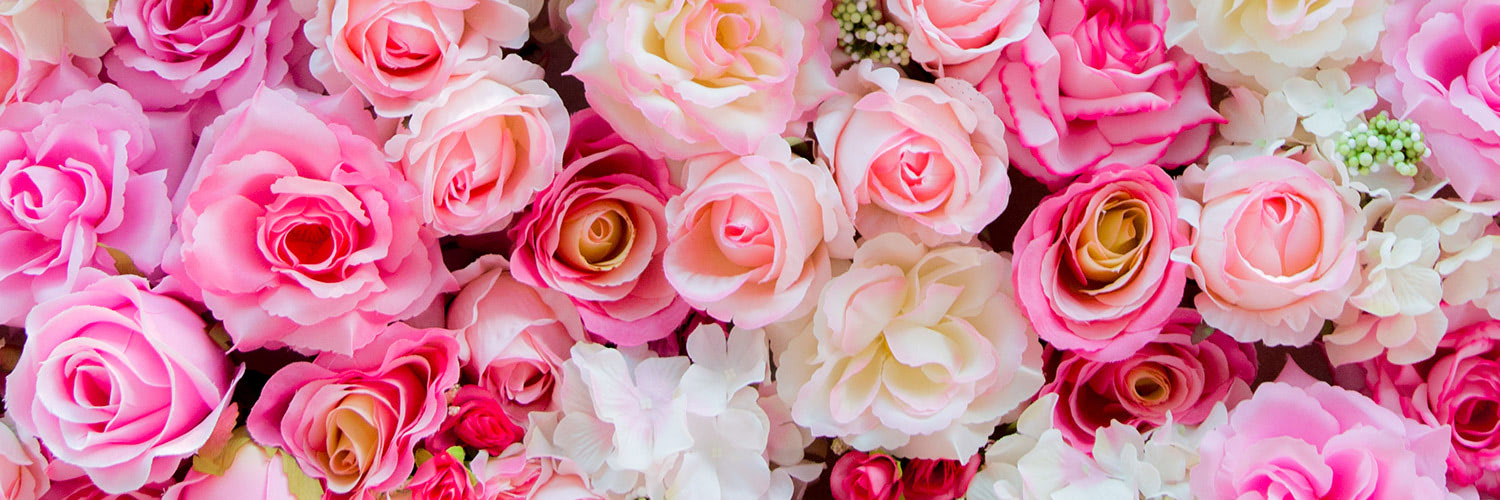
Beautiful, fragrant, and colorful, the rose continues to awe and amaze us with its unique yet widespread appeal. Continuously ranked the most popular flower in the world year after year, what makes the rose so special? A favorite subject of artists and poets and loved by gardeners and florists, let's learn more about the flower that "by any other name, would smell as sweet." - (Shakespeare)

About the Rose
The rose is a flowering plant belonging to the Rosaceae family. Native to North America, Europe, Asia, and northwest Africa, the cultivation of roses likely originated in China approximately 5,000 years ago. There is evidence that roses were also cultivated in ancient Rome around the same time, where they were highly sought after for their sweet scent and medicinal use. Both cultures commonly used roses in celebrations and for various decorations.
In China, rose cultivation became widespread, which led to roses eventually making their way from China to Europe in the late 18th century. Since then, European plant breeders started developing hybrids, and the modern rose was born.
Characteristics of Roses
Roses are versatile plants that can grow in various climates. They generally prefer well-drained soil, plenty of sunlight, and regular watering. Certain species and hybrids are bred for specific growing conditions, like heat tolerance or disease resistance.
Roses typically have layered, overlapping petals that form a bowl-like or spiraling bloom structure. They come in various colors, including red, pink, white, yellow, orange, purple, and even multi-colored varieties. (While some roses will naturally bloom in these hues, other rose colors, such as "black," blue, and rainbow, are genetically manipulated or dyed.) Depending on the variety, roses can range from small, miniature blooms (like spray roses) to large, dramatic flowers (like garden roses). Most rose species have thorns or prickles on their hardy, dark green stems, which serve as a natural defense mechanism. These sharp structures can vary in size and number.
Many roses are known for their strong, sweet fragrance, which is found in many different perfumes and candles. Although some modern hybrids may be less fragrant than older varieties, the sweet scent can also vary widely between different types of roses.
Popular Rose Varieties
Today, over 300 species of roses and tens of thousands of cultivars (specific types bred for desired traits) exist. As a result, roses come in a wide variety of colors, shapes, and sizes and are sorted into three main categories: Old Garden Roses, Species (Wild) Roses, and Modern Roses. Here are a few of our favorite varieties:
Rose Name Meaning
The modern English word "rose" comes directly from the Latin word "rosa," the Roman term for the flower. The Romans borrowed "rosa" from earlier languages, and it became widespread across Europe and other regions through trade, cultivation, and Latin's influence on many languages.
Some etymologists believe the word "rosa" could be connected to an even older Indo-European root "wer" or "wrdho," meaning "thorn" or "to grow." This theory is based on the idea that ancient people may have named roses for their thorny stems.
According to Greek mythology, the goddess of beauty, Aphrodite, named the rose by rearranging the letters of her son Eros' name.
Rose Symbolism
The most common meanings associated with the rose are love, romance, passion, beauty, and life. It's also believed that the number of roses also holds meaning. For instance, two roses represent mutual affection, while a dozen roses say "be mine."
Fun Facts About the Rose
- Roses are among the oldest flowers in the world. In fact, a rose fossil was found that dates back 35 million years ago!
- The world's most expensive rose is called the Juliet Rose, created by breeder David Austin.
- With proper care, roses can live for many years. Some heirloom varieties and wild roses can thrive for decades.
- The oldest living rose bush, known as the Thousand-Year Rose, is (as the name suggests) said to be 1,000 years old.
- The rose stands as the National Flower of the USA, England, and Iran.
- Through genetic manipulation, the first blue rose was created in 2004.
- Roses are one of the greatest muses for many writers, poets, and artists. There are over 4,000 songs about roses.
Meaning of Roses
Rose colors vary by growing area, time of year, local weather conditions and even climate variations within the same growing area. There is even some variation of color within the same rose variety. This guide is designed to give you a general sampling of many varieties which are popular today. New varieties are introduced every year.

Rose Occasions
There is never a wrong time to send roses, thanks to their myriad of colors and symbolic meaning. Although, there are a few holidays that put roses front and center! Valentine's Day, of course, is the biggest holiday for roses. Anniversaries, weddings, and other romantic occasions also call for the passionate red rose.
Roses are also used in many cultural and religious ceremonies, including Quinceañeras, where they symbolize purity and love as part of a young woman's coming-of-age celebration. In religious contexts, roses are often associated with devotion, purity, and reverence.
The tradition of awarding the Kentucky Derby winner with a grand garland of roses has inspired roses to be a main centererpiece for many Kentucky Derby parties. Their elegance and warmth make them ideal for creating festive atmospheres, not only for Derby celebrations but for any special occasion.
















